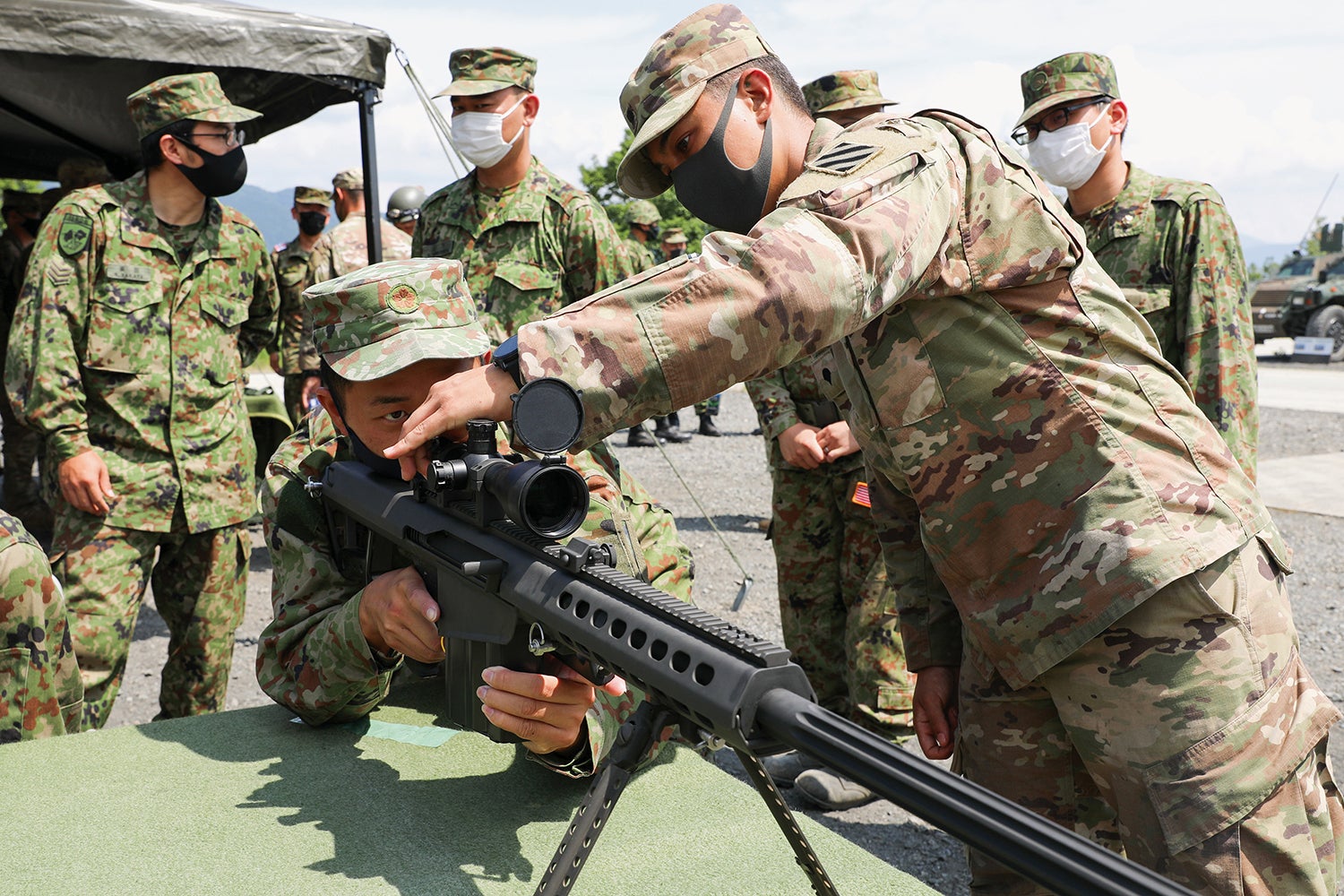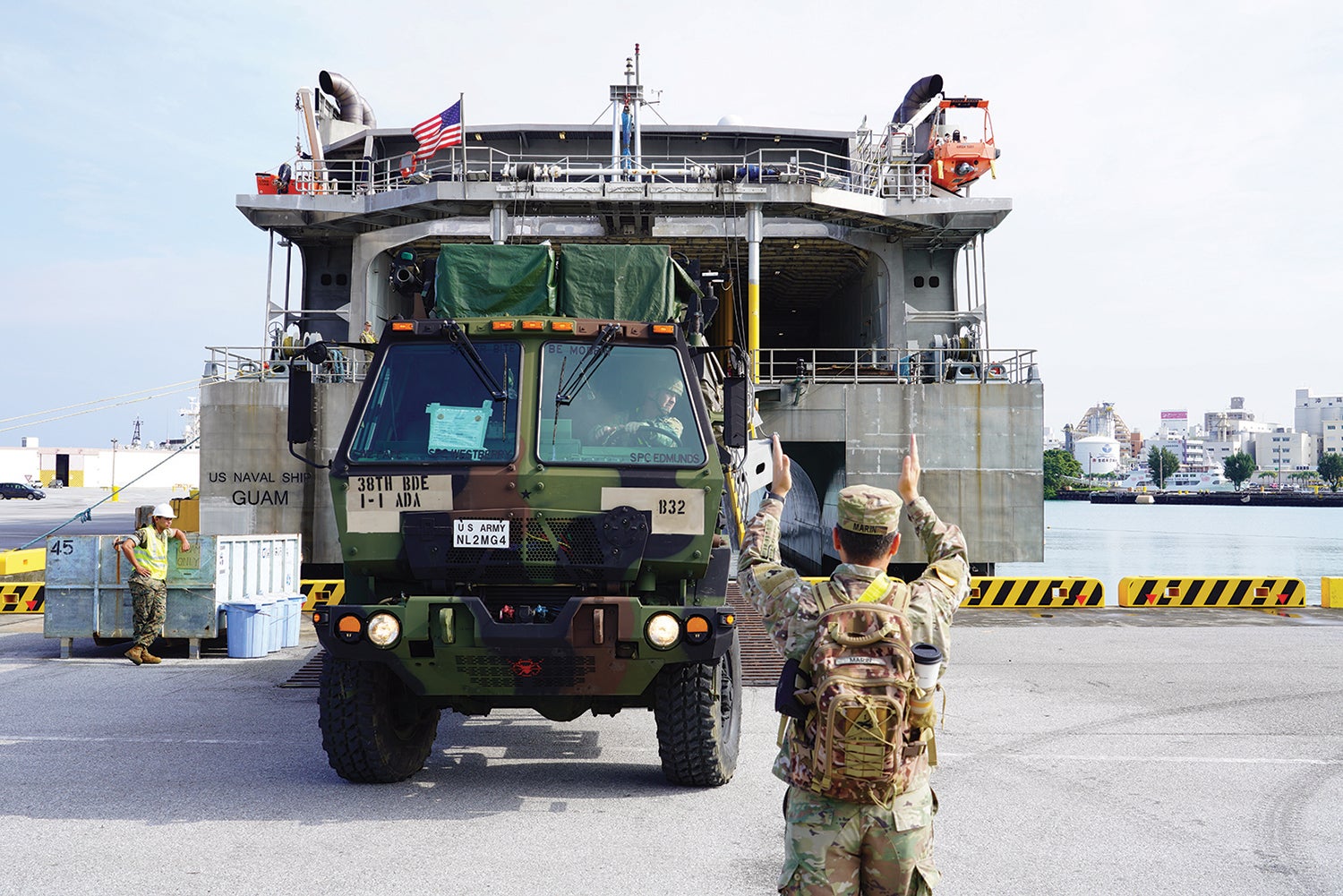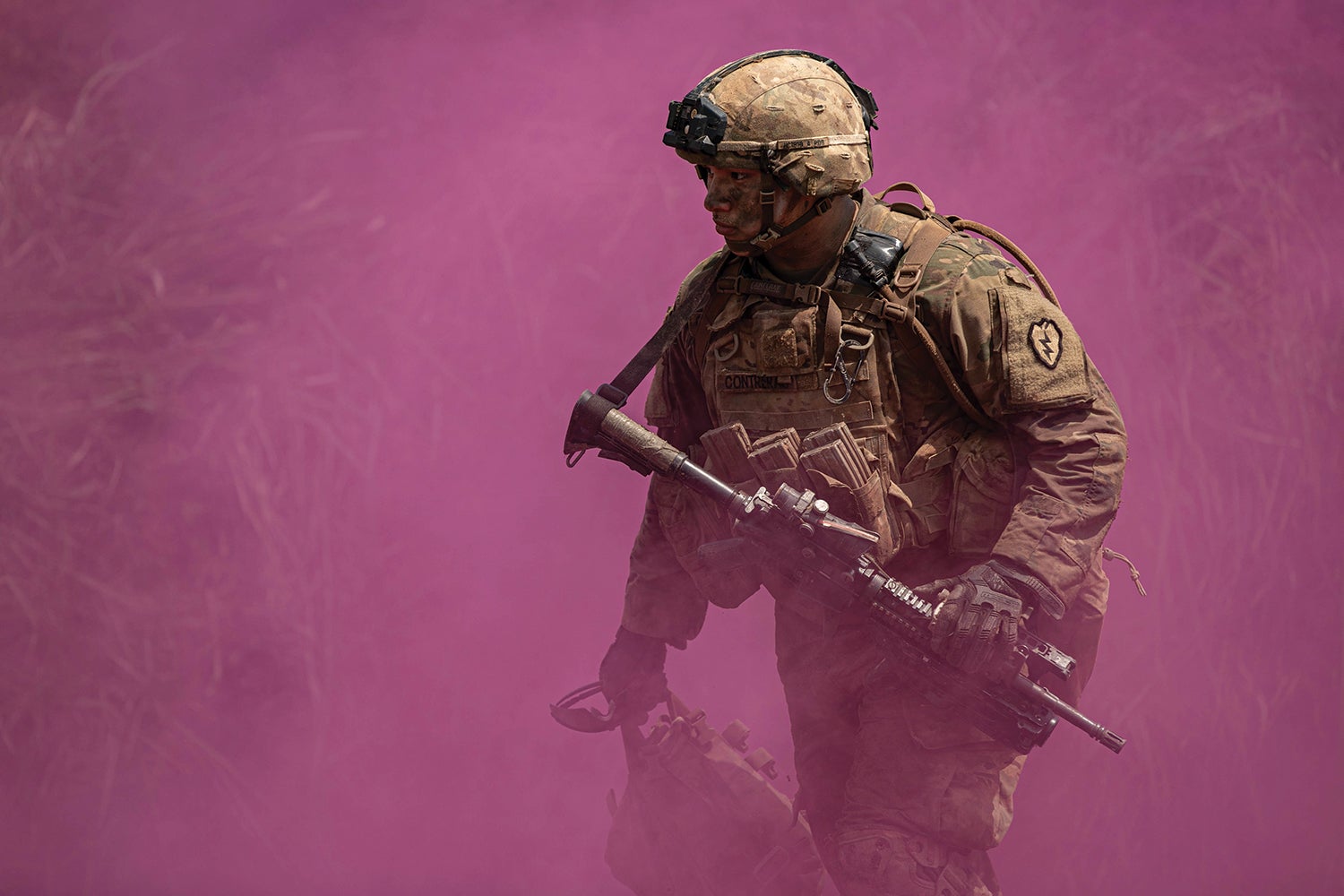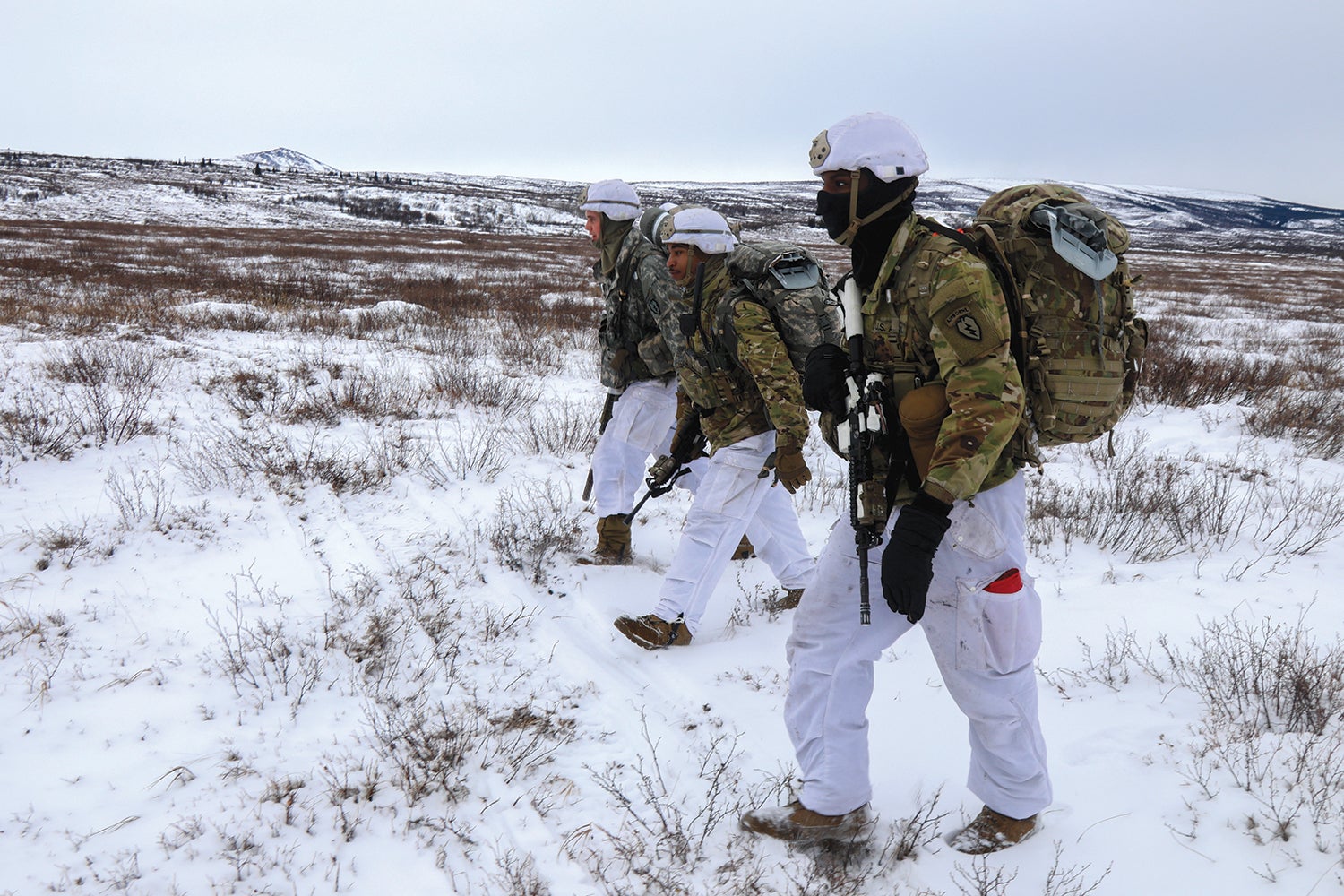Russian aggression against Ukraine is a stark reminder that war remains violent, human and unpredictable. And no matter where wars are fought, they can only be won on land.
Yet as eyes focus on Eastern Europe, geostrategic weight continues to concentrate in the Indo-Pacific, which is home to more than half of the world’s people, nearly two-thirds of the world’s economy and seven of the world’s largest militaries. The region’s international commons—the high seas and airspace—are vital to global commerce, and the United States’ own westernmost border spans from Hawaii to the territories of Guam, American Samoa, the Commonwealth of the Northern Mariana Islands and the Compact of Free Association states in the second island chain.
Russian aggression reminds us that the U.S. military must be prepared to fight and win across the full spectrum of conflict, with focused preparation on large-scale interstate war. However, as Defense Secretary Lloyd Austin frames integrated deterrence, our ultimate measure of success is no war.
This same logic drives Navy Adm. John Aquilino, commander of the U.S. Indo-Pacific Command, who has charged his air, sea, space, ground and cyber components to think, act and operate differently to underwrite a free and open Indo-Pacific.
As the nation’s theater Army in the Indo-Pacific, U.S. Army Pacific contributes to integrated deterrence through three flagship efforts: the Joint Pacific Multinational Training Center, Operation Pathways and Exercise Forager. These efforts drive theater Army actions and support U.S. Indo-Pacific Command investments to deter adversary aggression, build joint readiness and increase allies’ and partners’ confidence and capability.

Combat Training Center
The Joint Pacific Multinational Training Center is the Army’s first regional combat training center in the Indo-Pacific and its contribution to a top Indo-Pacific Command priority: the Pacific multinational training and experimentation capability. The training center, with campuses in Hawaii and Alaska that are connected by a technical backbone, leverages the region’s unique environments to provide realistic training in the conditions where Indo-Pacific Command forces are most likely to operate.
At the training center’s Hawaii-based hub, units conduct brigade- and division-level combat training across the tropical, archipelagic and mountainous settings of the Hawaiian Islands, benefiting from the joint training enabled by the co-location of Navy, Air Force, Marine Corps and special operations forces.
At the Joint Pacific Multinational Training Center in Alaska, brigade combat teams train in arctic and high-altitude conditions, and likewise benefit from the inherently joint training environment.
The training center extends beyond Hawaii and Alaska to an exportable training capability that Army Pacific deploys into the region to support joint multinational training. In 2021, Army Pacific supported Exercise Garuda Shield by deploying the training center’s exportable capability to Indonesia, one of many Indo-Pacific nations partnering with the U.S. to build their own training centers. Across its three training platforms, the training center enables units to learn to train and fight, generating tactical readiness in conditions that mirror the broader Indo-Pacific region.



Pathways, Forager
The theater Army then projects these combat credible forces west of the international date line for Operation Pathways, an evolution of the theater Army’s traditional exercise program. During Pathways, theater Army units build operational and strategic readiness as they operate with joint and combined forces. In 2021, Operation Pathways exercised theater Army capabilities like Army Watercraft Systems in Guam and Indonesia, Patriot missile live-fires in Australia and the Japan Ground Self-Defense Force’s first bilateral airborne operation outside of Japan.
As part of every exercise, the theater Army also executes experiments through Exercise Forager, the experimentation arm of Operation Pathways. In Forager, the theater Army partners with other Indo-Pacific Command forces to experiment with new capabilities and real formations in the region’s rich experimentation environment.
In Exercise Forager 2021 alone, the theater Army’s operational command—I Corps—and the Army’s 1st Multi-Domain Task Force conducted over 100 experiments to advance multidomain operations west of the international date line.
Together, Operation Pathways and Exercise Forager place U.S. commanders, soldiers and equipment on the Asian continent and inside the first and second island chains for extended periods of time. This series of international activities—through the presence of soldiers on the ground—increases ally and partner confidence and capability, builds joint readiness and deters adversary aggression.

Allies and Partners
The most critical dividend of the theater Army’s efforts—through the Joint Pacific Multinational Training Center, Operation Pathways and Exercise Forager—is persistent engagement with allies and partners, who together form the decisive counterweight against destabilizing forces in the region. With dense populations and some of the world’s largest militaries, it is little surprise that in these Indo-Pacific nations, armies are often the most relied-upon and stabilizing institutions.
Partnering with these regional armies, the theater Army understands regional security demands in a way only made possible through the persistent presence of boots on the ground. These relationships are strengthened through that presence—elbow to elbow, tank to tank, formation to formation—resulting in bonds that generate trust among militaries and nations. In turn, these partnerships underpin the theater Army’s greatest competitive advantage: an integrated and interoperable regional land power network, which is the glue that binds together the region’s security architecture.
Joint Readiness
In a recent message to the force, Army Secretary Christine Wormuth characterized the theater Army as “the backbone of joint operations in the Indo-Pacific” because the U.S. Army provides foundational capabilities that enable the joint force to fight and win wars. Many of these capabilities—at required scope and scale—are only found in the Army, and each is represented by a theater-enabling command within the theater Army, from air and missile defense to sustainment, communications, engineering, civil affairs, contracting and more. The theater Army also provides scalable command and control for combined joint operations, demonstrated by Army Pacific’s 2021 recertification as a combined joint task force in Exercise Pacific Sentry.
Ultimately, the Army remains the only service that can seize, hold and defend terrain across the duration of a campaign, a fact illustrated by the Army’s history in the Indo-Pacific. Since 1898 and the defense of Manila in 1899, the Army has fought 63 ground campaigns in the Indo-Pacific, more than it has in the rest of the world combined. In World War II, the Army conducted large-scale ground operations across the Asia-Pacific Theater, deploying the equivalent of 21 combat divisions and 1.8 million soldiers, a testament to the Army’s unique ability to scale and mass.
As Wormuth describes, the U.S. Army—then, as now—served as “the linchpin service” for a massive combined joint force by providing foundational capabilities such as large-scale maneuver forces, command and control, and intratheater logistics. Moreover, U.S. land forces did none of this alone; our allies have remained a bedrock of strength for combined joint coalitions from World War II to the contemporary environment.

New Approaches
This year and beyond, the theater Army offers new approaches to challenge malign behaviors, improve alliances and reinforce a free and open Indo-Pacific through the Joint Pacific Multinational Training Center, Operation Pathways and Exercise Forager.
In March, the training center conducted the Army’s first arctic combat training center rotation, in Alaska.
In Operation Pathways and Exercise Forager 2022, the theater Army downloaded floating Army pre-positioned stocks—for the first time—for use during Exercises Balikatan and Salaknib in the Philippines in March and April. Army Pacific will also officially open the Hawaii Pacific Innovation Center in Honolulu this summer. This capability will be dedicated to improving the joint force’s ability to see, sense and understand threats in the Indo-Pacific Theater.
Unified Pacific 22, the Army chief of staff-sponsored, Army Pacific-led war game to take place in May, will provide deep analysis on the role of land power during future conflict in the Indo-Pacific. As part of Forager, Army Pacific is teaming with the U.S. Army Futures Command to execute Project Convergence 2022 in the Indo-Pacific, capitalizing on the diverse, dispersed operational environment to inform Army transformation.
Collectively, these activities will provide persistent forward-positioned land forces and capabilities as visible symbols of U.S. commitment and expression of U.S. values in the Indo-Pacific. The Joint Pacific Multinational Training Center, Operation Pathways and Exercise Forager will bolster ally and partner capabilities and present new dilemmas to our adversaries while demonstrating the foundational value of land power in a theater where maritime and air play such visible, critical roles.
The Army’s Indo-Pacific history reinforces that land power is joint power, and in this dynamic, multifaceted region, many challenges—pandemics and disease, food and freshwater security, terrorist activities and the consequences of climate change—will be found, fought for and decided on land.
And if the U.S. must fight a large-scale war, the theater Army’s linchpin role will be critical to that global, multidimensional and multidomain fight. If the joint force approaches the next war domain on domain—sea on sea, air on air or country on country—the outcome will not be what we desire. However, if we act, operate and fight as an integrated joint force that’s tightly linked with our Indo-Pacific allies and security partnerships, we will uphold U.S. security commitments and preserve a free and open Indo-Pacific for future generations.
* * *
Gen. Charles Flynn assumed command of U.S. Army Pacific, Fort Shafter, Hawaii, in June 2021. Previously, he served as deputy chief of staff of the Army for operations, plans and training. He has served in a variety of command, staff and leadership positions from platoon leader to division commander, with many of those positions in the Indo-Pacific Theater. He holds a master’s degree in national security and strategic studies from the U.S. Naval War College and a master’s degree in joint campaign planning and strategy from the National Defense University.

